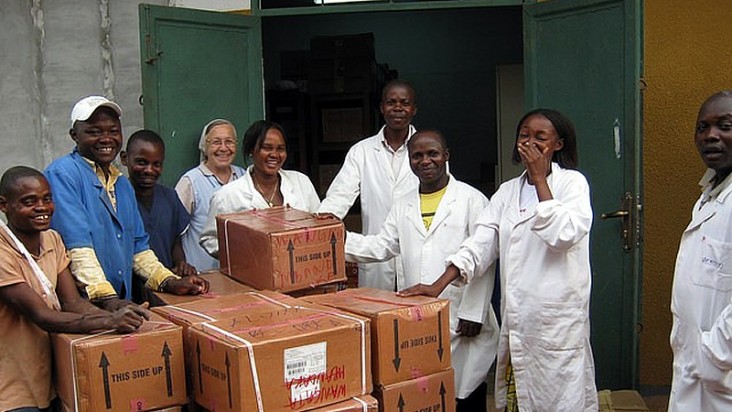- What We Do
- Agriculture and Food Security
- Democracy, Human Rights and Governance
- Economic Growth and Trade
- Education
- Environment and Global Climate Change
- Gender Equality and Women's Empowerment
- Global Health
- Humanitarian Assistance
- Transformation at USAID
- Water and Sanitation
- Working in Crises and Conflict
- U.S. Global Development Lab
Speeches Shim

The U.S. Agency for International Development’s (USAID’s) health programs depend on a reliable, uninterrupted supply of quality health products. Some of the critical commodities required for HIV/AIDS programs around the world include:
- HIV treatment and other essential medicines
- HIV rapid diagnostic kits
- Voluntary Medical Male Circumcision (VMMC) kits
- Male and female condoms and personal lubricants
- Viral Load reagents, analyzers and other laboratory diagnostics and equipment
To meet that challenge, USAID, through its Global Health Supply Chain program and its predecessors, the Supply Chain Management System and DELIVER project, operates one of the largest public health supply chains in the world. The mission is to ensure the supply of quality essential medicines and other products to people impacted by HIV/AIDS. Additionally, the global health supply chain program promotes sustainable supply in partner countries in collaboration with other U.S. agencies and stakeholders, while also training local staff in supply chain management to strengthen countries’ capacities to one day manage their own supply chains.
Results
Through its supply chain programs, USAID has made significant and long-lasting contributions to the U.S. Government’s fight against the HIV/AIDS epidemic, including:
- Providing more than US$ 2.5 billion in life-saving commodities with more than 25,000 shipments to some 62 countries
- Providing more than 70 percent of the antiretrovirals (ARVs) funded through the U.S. President’s Emergency Plan for AIDS Relief (PEPFAR)
- Driving down commodity costs through pooled procurement
- Working with partners and stakeholders to lower the average per-patient, per-year cost for ARVs from US$ 1,500 in 2005 to US$ 80 in 2017
- Supplying more than 240 million HIV/AIDS rapid test kits
- Delivering more than 4 million VMMC kits.
- Training more than 20,000 host-country public health professionals in supply chain management
- Installing innovative modular storage units, warehouses and clinics for use in host governments’ supply chains
- Assisting the Government of South Africa with its ARV procurement process, resulting in more than 50 percent reduction in cost and a savings of more than US$ 630 million, allowing a 40 percent more patients to be placed on treatment
- Saving more than US$ 176 million in freight costs through forecasting and supply planning and shifting from air to ocean shipping
- Developing the ForLab quantification tool, in partnership with the Clinton Health Access Initiative, to help host country governments accurately forecast their laboratory commodity needs
- Assisting the Government of Nigeria to consolidate 17 separate supply chains with more than 6,500 health facilities into one unified national HIV/AIDS supply chain, reducing stockouts from 25 percent to 9 percent
Additional Resources
- Global Health Supply Chain Program
- ADS 312 Additional Help Document [PDF, 550KB]
- USAID List of Approved HIV/AIDS Rapid Test Kits – February 2017 [PDF, 70KB]
- USAID List of Approved Antiretrovirals (ARVs) [XLS, 297KB]
- Template for Restricted Commodity Approval for Pharmaceuticals – 4/25/13 [XLS, 18.4KB]
- Impact Blog: Delivering Life-Saving HIV/AIDS Drugs Around the World

Comment
Make a general inquiry or suggest an improvement.